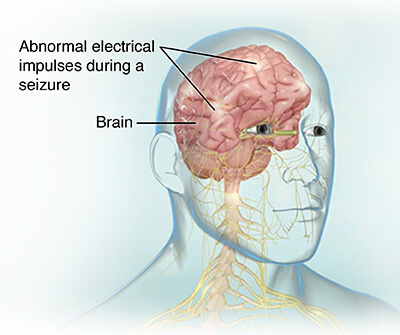
Fits are different from seizures, but both can cause serious problems in a child's life
A sudden fit (seizures) has a wide range of causes, and all fits will not necessarily be caused by a brain tumor. Fits happening for the first time need to be looked at as an extremely serious problem, and deserve further investigation into the cause of the fit. A fit might be a short period when the child seems to be "absent of everything going on around them," or jerking, twitching or shaking of a limb, hand or leg.
Fits can also be caused by sudden muscle contractions or spasms. The child might be suddenly unable to sit up, stand or walk properly. They might also lose control over their bladder or bowels. This condition can occur in one child and can be attributed to either a medical problem a nutritional deficiency or emotional stress.
The baby may also have sudden tingling or numbness in any part of the body. Numbness in the fingers and toes may indicate that the child has had a stroke or suffered from an aneurysm. Children who have had a stroke may also have sudden seizures. A child may experience sudden dizziness for no apparent reason, while another child may experience sudden shortness of breath without warning. Other children may also experience chest tightness or a feeling of suffocation.
Sudden seizures can be caused by a variety of reasons, from nutritional deficiencies to neurological problems. While it's impossible to pinpoint the exact cause of a child's seizures, there are a number of important steps you can take to help your child cope and reduce symptoms.
It is important to make sure your child is getting the right amount of vitamins, minerals, exercise, and other nutrients in his or her diet to keep him or her healthy. Make sure your child exercises regularly and avoids fatty foods, which are usually high in saturated fat, carbohydrates, salt and sugar.
Your child also needs to get enough rest and sleep, and make sure that he is consuming the necessary amounts of protein, iron and vitamins to support good growth and development. It may also be helpful for your child to use a behavior change program to help control seizures. stress levels.

If the attack is sudden, talk to your child's doctor or neurologist about the problem. There may be an underlying problem that needs to be addressed first, such as food intolerance or aneurysm, which can help prevent future seizures.
Keep an eye out for any medical problems, such as asthma, diabetes, fevers, seizures and even cancer. Your child's doctor is the best person to evaluate the symptoms and tell you if there is something more serious going on that is causing the fits. Seek emergency care if the child is experiencing convulsions, loses consciousness, is having hallucinations or develops strange behaviors such as convulsions, agitation or fits. A child with heart disease should seek emergency treatment immediately.
The U.S. Food and Drug Administration (FDA) regulate the production of all foods and children's diets. They require manufacturers to list all ingredients in the label. Manufacturers must use a special method to add vitamins to their foods to ensure that they are in the proper amount and to ensure that they do not have negative side effects. Manufacturers are not allowed to include natural vitamin supplements such as folic acid.
The most common types of vitamin supplements include vitamin E and vitamin D. To be effective, these supplements must be taken daily. These vitamins help to prevent muscle weakness, which is one of the primary causes of falls, bone loss and fractures. in children. They can also help the child avoid infections that can cause rickets, a condition that causes the bones to become fragile.
Be careful when choosing supplements because some children's supplements may contain ephedra, a stimulant that is banned for pregnant women. You should always check the supplement's ingredients to see if it has ephedra.
Before you decide which children's supplements to buy, it is important to do your homework. Ask your doctor or pharmacist about potential side effects and other health risks and check the manufacturer's website to make sure that it is safe for your child.